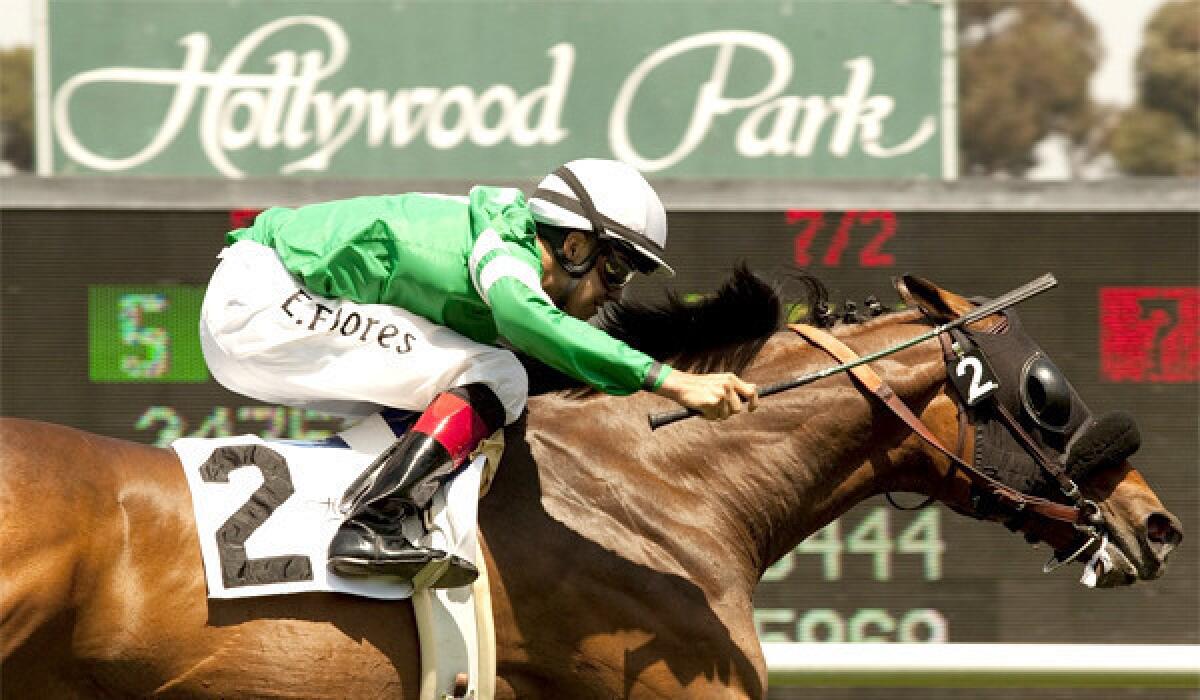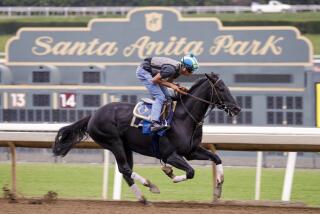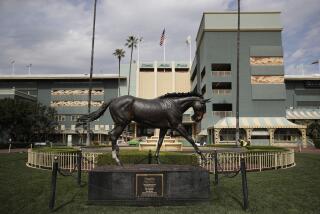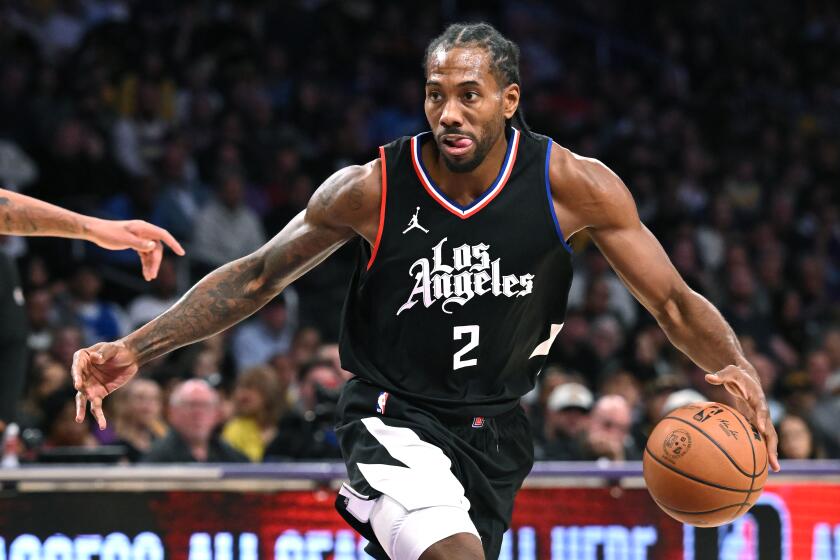Hollywood Park’s ghost of a chance casts pall on Southland racing

With its announcement Thursday, Hollywood Park did little to refute the theory that horse racing is a sport in need of hospice.
They raced at the Inglewood track Friday, but it wasn’t business as usual. Nor will it be the rest of this meeting and the track’s final one, which ends Dec. 22. For people in the business, and fans of the sport, the next six months of racing at the place universally known as Hollypark will be an emotional saddle sore.
The bulldozers are at the gate.
Shortly after the first of the year, the grandstand through which movie stars once paraded and which racing fans once packed will come down. The infield of lakes and palm trees, waterfalls and pink flamingos will become houses, condominiums, shops and restaurants.
“It’s a higher and better use of the land,” said track President Jack Liebau. Liebau is 75. The track was built by the Warner Bros. movie moguls the year he was born.
By “higher and better,” Liebau meant more profitable. The Hollywood Park Land Co., to whom Liebau reports, was clear about its intentions from the start. It bought Hollywood Park from Churchill Downs in 2005 and said it would give racing a three-year commitment to “improve the business model.” Failing that, the prime piece of land would be developed.
Liebau referred to the transaction between Churchill and his company as the time when “the racing people took the money and ran.” He said that a major strategic effort by his group was to persuade the state to allow slot machines on site, which has become a good way to finance the expensive business of racing horses. Then the Indian casino lobby stopped that effort and Hollywood Park kept racing mainly because, for a while, the economy didn’t pencil out well for big development projects. Now it apparently does.
Many people will lose jobs in racing, including Liebau, a longtime racing official and owner, who should not be viewed as the hangman here. Always a horseman and never a developer, Liebau kept the racing going, put in the best synthetic track in the area, oversaw several innovations in the sport and can leave with regrets for his sport, but none for his loyalty to those signing his paycheck.
His job was to manage a lame duck.
“I’ll retire to play with my grandchildren,” he said Friday.
There are so many issues ahead. Which tracks get Hollywood Park’s summer and winter dates? How can Southern California racing maintain its current stature with one fewer facility? Most important, where do trainers house their horses, when the loss of Hollywood Park’s barn area leaves the industry “about 1,000 stalls short,” according to Liebau.
Friday at the track was like so many other weekdays in recent years. The sun shined on the manicured infield, the jumbo jets drifted overhead en route to LAX and every 25 minutes or so, the horses came onto the track and raced. At a glance, it appeared almost heavenly.
But it isn’t.
There were miles of seats and yards of butts. This place was packed for the first Breeders’ Cup (1984), where trainer Vincent Timphony celebrated his stunning victory in the Classic with 31-1 Wild Again by tossing dollar bills over the balconies. Friday, there wasn’t a crowd, there was a gathering. The Directors’ Room, where Elizabeth Taylor once sat and tried to teach Michael Jackson how to make a wager, was absent many directors.
Ticket windows were mostly closed — a teller here and a teller there, and never a long line. Press-box attendance was four. Parking lots in front of the adjacent casino were full. Those in front of the racing grandstand were not. Hollywood Park isn’t alone in the age of 1,500 weekday racing attendance figures, but in recent years, it has led the way in making it the norm.
Trainer Peter Miller stood at the rail, shook his head and said that the demolition of Hollywood Park will be “like losing a family member.” Trainer Doug O’Neill said Hollywood Park “should honor and respect its history.” He questioned why a place surrounded by empty stores and homes for sale would want to build more of the same.
Both have lots of horses. Miller said he might take his stable to San Luis Rey Downs in San Diego County. O’Neill said he didn’t want to, that he has lived in Santa Monica all his life, but that he might have to move part of his stable east.
Hollywood Park is the place Zenyatta and I’ll Have Another, in recent years, called home, the place Seabiscuit, Seattle Slew, Citation, Swaps, John Henry, Native Diver and Lava Man, and so many others, riveted race fans.
This time next year, the only riveting going on will be on steel beams. History will give way to high-rises.
“Times change,” Liebau said.
Indeed. And right now, the morning line odds on racing reversing that seem about 5,000 to 1.
More to Read
Get our high school sports newsletter
Prep Rally is devoted to the SoCal high school sports experience, bringing you scores, stories and a behind-the-scenes look at what makes prep sports so popular.
You may occasionally receive promotional content from the Los Angeles Times.







